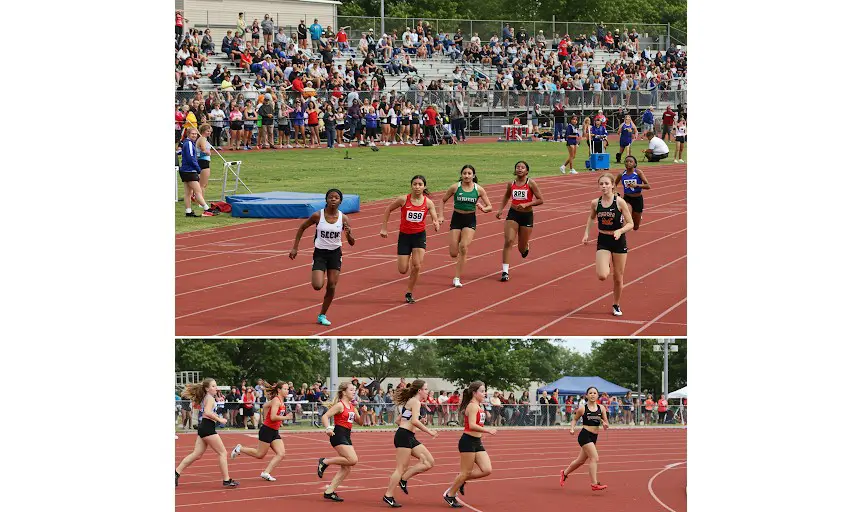
Track and Field: A Deep Dive into the Sport’s Legacy and Global Impact
Track and Field is one of the most storied and celebrated sports in the world. It combines power, speed, endurance, and technique across a wide array of events. This sport has deep roots in human history, and its cultural significance continues to grow. Track and Field is not only a stage for elite athletes but also a fundamental part of youth and amateur sports. The global footprint of Track and Field extends from local school grounds to the Olympic stage.
The Origins and History of Track and Field
Track and Field dates back to ancient times. The earliest recorded competitions occurred in ancient Greece, particularly during the Olympic Games in 776 BCE. These games featured events such as running, long jump, and discus. Greek culture held athleticism in high regard, and victories brought honor to cities and individuals alike.
The Romans later adopted many of these events. However, during the medieval period, organized athletics declined. It wasn’t until the 19th century that Track and Field reemerged in organized forms. British schools played a pivotal role in modernizing the sport. Events like the 100-yard dash and the mile run became common in school competitions.
The first modern Olympic Games in 1896 reintroduced Track and Field to the global stage. Since then, the sport has grown tremendously. The International Association of Athletics Federations (IAAF), now called World Athletics, was founded in 1912. This body standardized rules and helped promote international competitions.
Global Popularity and Participation
Today, Track and Field enjoys massive popularity worldwide. It is one of the most-watched events during the Summer Olympics. From North America to Africa, the sport has captivated millions. Countries like the United States, Jamaica, and Kenya produce world-class athletes regularly.
In the United States, Track and Field is integral to both high school and collegiate sports. Major championships such as the NCAA Track and Field Championships attract nationwide attention. Meanwhile, in Jamaica, sprinting is almost a national obsession. Athletes like Usain Bolt and Shelly-Ann Fraser-Pryce have become household names.
Kenya and Ethiopia dominate long-distance running. These countries have produced legends like Eliud Kipchoge and Haile Gebrselassie. In Europe, nations such as Great Britain, Germany, and France have strong Track and Field programs.
Asian countries like China and Japan are also investing heavily in Track and Field. Their performances at recent Olympics show significant progress. Australia and New Zealand also maintain competitive programs, especially in middle-distance events.
Amateur Track and Field: Youth and School Involvement
Amateur participation forms the backbone of Track and Field. Children often experience the sport through school physical education programs. Many countries host inter-school competitions that include running, jumping, and throwing events.
In the United States, youth programs such as AAU Track and Field provide competitive platforms. These events prepare athletes for high school and college competitions. Similarly, Canada runs programs through provincial and national athletic organizations.
European countries have club-based systems. Young athletes join local athletics clubs and compete in regional meets. These clubs often offer professional coaching and advanced training facilities.
In Africa, school competitions are fiercely contested. Many elite athletes begin their careers by winning regional school championships. These victories often lead to opportunities for scholarships and international exposure.
Asian countries have rapidly developed school and youth programs. Japan’s high school relay races draw massive television audiences. China incorporates athletics into national sports development strategies.
Amateur Track and Field promotes not just athleticism but also discipline, teamwork, and resilience. It offers a foundation for lifelong fitness and community engagement.
Professional Leagues and Competitions
Professional Track and Field features a variety of leagues and competitions. The Diamond League is the most prestigious international series. Organized by World Athletics, it includes meets in cities like Zurich, Doha, and Eugene.
Athletes earn points based on performance and qualify for the Diamond League Finals. These events feature top-tier competition and substantial prize money.
National championships serve as stepping stones for professional athletes. The USATF Championships in the United States and the British Championships in the UK are highly competitive. These events often double as Olympic or World Championship qualifiers.
The World Athletics Championships occur biennially. It gathers the world’s best athletes in a showcase of speed, strength, and skill. The Olympics, held every four years, remain the pinnacle. Medals won here carry immense prestige.
In addition to these global events, many countries host professional leagues. For example, Japan has a corporate Track and Field league. Companies sponsor teams, and employees compete at a high level.
European countries have strong club competitions. Athletes represent clubs rather than national teams in league events. These clubs often provide financial support and training facilities.
Sponsorships, endorsements, and media rights further support professional athletes. Brands like Nike, Adidas, and Puma invest heavily in elite Track and Field talent.
Political and Social Significance
Track and Field has always had social and political impact. The 1936 Berlin Olympics saw Jesse Owens, an African American, win four gold medals. His victories challenged Nazi racial ideologies and inspired millions.
In 1968, Tommie Smith and John Carlos raised their fists during the medal ceremony. Their salute became a powerful symbol of the civil rights movement. It showed how athletes could use their platform to advocate for change.
Gender equality has also evolved through Track and Field. Women were initially excluded from many events. Over time, inclusion has improved. Today, women compete in nearly all the same events as men.
The sport has highlighted broader issues such as doping, nationalism, and immigration. Debates around eligibility and fairness continue to shape its landscape.
In recent years, athletes have spoken out on climate change, racial injustice, and mental health. Platforms like social media amplify their voices. Track and Field remains not just a sport but a space for dialogue and advocacy.
Community initiatives also leverage the sport for social good. Programs in underprivileged areas provide training and education. They aim to uplift youth through sport.
The simplicity of Track and Field—running, jumping, throwing—makes it universally accessible. This universality allows it to reflect and influence societal trends.
Rules and Events
Track and Field comprises running, jumping, and throwing events. Each event has specific rules to ensure fair competition.
Running Events: These include sprints (100m, 200m, 400m), middle-distance (800m, 1500m), and long-distance (5000m, 10000m). Athletes must stay in their lanes in sprints. False starts result in disqualification.
Hurdles and Steeplechase: Races involve clearing obstacles. In hurdles, knocking down a hurdle doesn’t disqualify an athlete but slows them down. The steeplechase includes water jumps.
Relays: Teams of four compete in 4x100m and 4x400m relays. Baton exchanges must occur within designated zones. Dropping the baton or improper exchanges result in disqualification.
Jumping Events: These include long jump, triple jump, high jump, and pole vault. Athletes have three attempts per height or distance. Fouls occur if an athlete steps over the take-off board or knocks the bar.
Throwing Events: These include shot put, discus, javelin, and hammer throw. Athletes must throw from a designated circle or runway. The implement must land within sector lines.
Combined Events: The decathlon (men) and heptathlon (women) include multiple events scored cumulatively. Points depend on performance in each event.
All competitions use electronic timing and measuring devices. Judges monitor for fouls and ensure rules are followed.
Track and Field demands not only physical skill but also strategy and mental focus. Athletes must manage energy, pace, and technique.
Conclusion
Track and Field stands as a pillar of global sports culture. Its roots stretch back thousands of years. The sport thrives in schools, communities, and professional arenas. It serves as a platform for athletic excellence and social commentary.
From its ancient origins to modern-day championships, Track and Field has inspired generations. Its events are simple yet profound, requiring the best of human potential. As the sport evolves, it will continue to unite people across borders and backgrounds.
Whether in a schoolyard race or an Olympic final, the spirit of competition and excellence lives on. Track and Field remains a celebration of what the human body and mind can achieve.





